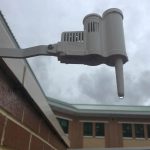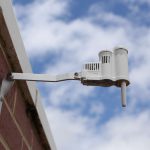In a recent blog post, we covered the basics of doing a sprinkler “wet-check.” (If you missed that post, or want a quick review, click here.)
In today’s post, we’re focusing entirely on rain sensors, and how/why they sometimes fail to save much water.
Ready?
Chances are, if you have an irrigation system in the state of Florida, you probably have something that looks like this:
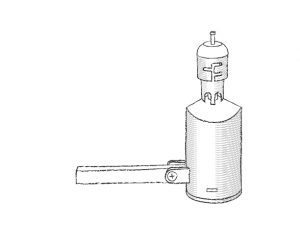
…or this:
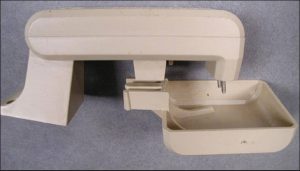
Q: How do they work?
A: In a nutshell – if the sensor is soaked, the sprinklers won’t run.
Once the sensor dries out, the scheduled sprinkler cycles will run again.
Q: Do they actually work?
A: We hear this question a lot. The answer is “Yes…, BUT… ”
1) The sensor needs to be mounted upright, able to catch rain. In other words, the sensor can’t be:
- under an overhang
- hidden inside a shrub
- beneath a big tree
- full of airplants (moss, spiders, etc…)
- sideways
- etc…
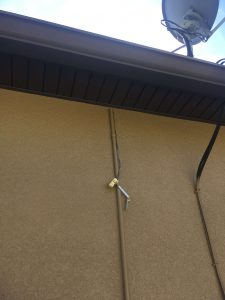
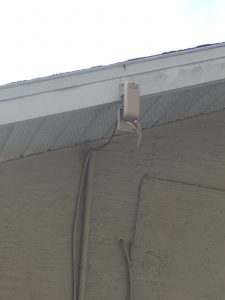
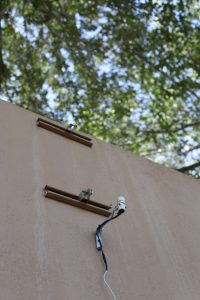
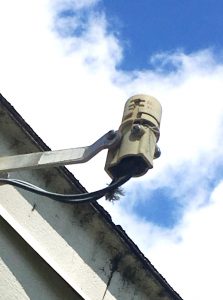
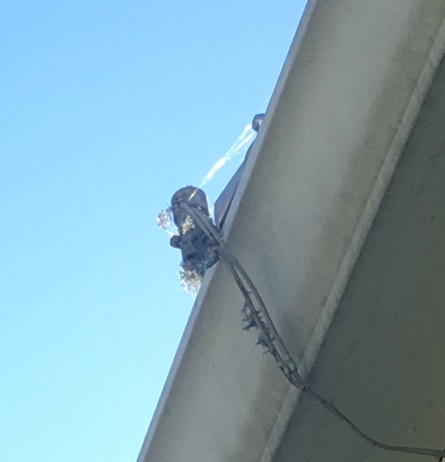
2) The controller needs to be receiving input from the sensor. In other words,…
- if using a wired sensor, the wires need to be properly attached to the controller.
- if using a wireless sensor, the battery needs to be periodically checked/replaced, and the wireless signal needs to be received at the controller.
- the sensor must be switched to ACTIVE. Switching the sensor to BYPASS mode causes the controller to ignore all information coming from the sensor. (i.e. if your sensor is bypassed, you don’t have a water-saving device – you just have a funny-looking gutter ornament!)
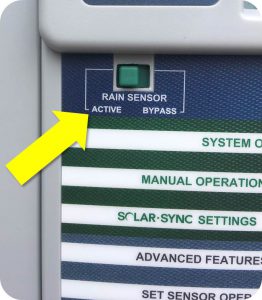
3) UF/IFAS researchers have found that although new or regularly maintained sensors can provide some water savings, the dry-out time of a rain sensor is typically different from the dry-out time of the soil. (Often, the sensor dries out much quicker than the soil.) In other words, your sensor may be ready to allow watering before your landscape really needs it.*
WAIT A SEC… Did that say “new or regularly maintained rain sensors?”
When was the last time YOU checked, maintained, or replaced (or even thought about) your rain sensor?
I thought so…
Takeaway message – If it’s raining buckets, simply switch your system to “OFF.” If you’re relying on the rain sensor to provide water savings, you should periodically check to make sure it’s still working. If it’s been up there for many years, you should consider replacing it.
(Otherwise, you could be one of those people sprinkling in the rain…)
For even better water savings, consider upgrading to a soil moisture sensor. You can read all about soil moisture sensors in our previous 3-part series “Taking the guesswork out of watering the lawn.” LINKS:
Part 1
Part 2
Part 3
For even more water-saving tips, check out the post – “Less Water, Better Landscape.”
Did you know?
In Florida, all sprinkler systems are actually required to be equipped with “technology that inhibits or interrupts operation of the system during periods of sufficient moisture.” A rain sensor -or- a soil moisture sensor can be used to fulfill this requirement.
About the Author: As the Florida Friendly Landscaping (FFL) Program Coordinator in Pasco County, Frank works with the residents, homebuilders, and businesses of Pasco to achieve attractive, resilient, low-maintenance yards and communities while reducing over-reliance on irrigation, fertilizer, and pesticides. (Click to learn the 9 Principles of Florida-Friendly Landscaping!) Through an innovative collaboration with Pasco County Utilities, Frank provides on-site assistance to individuals and communities identified as high water users. He can be reached at (813)929.2716.
Not in Pasco County? Not a problem! Click here to find your local UF/IFAS Extension office!
About UF/IFAS Extension: UF/IFAS Extension serves as a source of non-biased, research-based information for the residents, businesses, and communities of Florida, providing educational materials and programs for adults and youth. We proudly “provide solutions for your life.”
*In recent testing, the majority of sensors were ready to allow irrigation again only 1 – 2 days after receiving rainfall. A handful of controllers currently on the market will allow the user to custom program a delay – in other words, you can tell the system not to water the lawn for at least #X days after the sensor reaches saturation, regardless of how quickly the sensor dries back out.
References:
Residential Irrigation System Rainfall Shutoff Devices, or Rain Sensors
LINK: http://edis.ifas.ufl.edu/ae221
Estimated Water Savings Potential of Florida-Friendly Landscaping Activities
LINK:http://edis.ifas.ufl.edu/ae515
by Frank Galdo
 0
0
